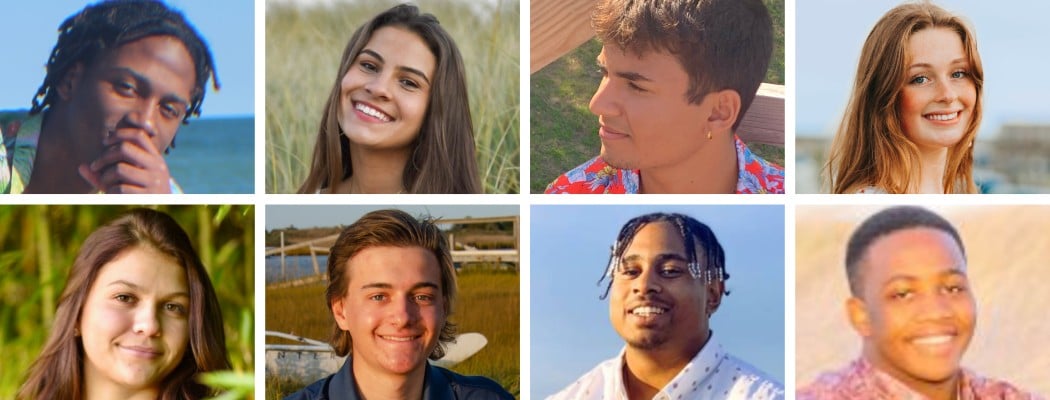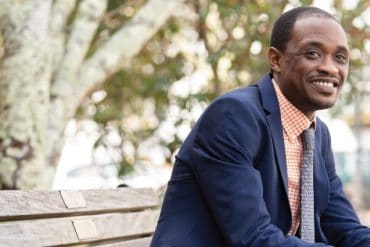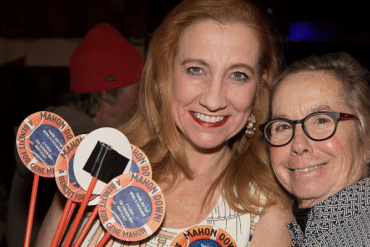The evolving face of Nantucket’s student body.
Just over twenty years ago, the student body of Nantucket’s public schools was 95 percent white. This year, for the first time, the island school system became majority-minority, continuing a dramatic demographic shift within Nantucket’s year-round population over the span of those two decades.
The transformation has been driven largely by families arriving on the island from Central America, in particular El Salvador, but Nantucket’s public schools now have students from all over the world, including Caribbean nations like Jamaica and the Dominican Republic, as well as Eastern European and South Asian countries. Today, more than eleven different languages and seventeen different countries are represented within Nantucket’s schools.
Population trends have led demographers to project that the United States as a whole will become majority-minority—when the non-white population eclipses 50 percent—at some point between 2040 and 2050. In Nantucket Public Schools, that threshold was crossed in the 2020–21 school year. “Within the administration, we’ve talked a lot about that,” said Superintendent Beth Hallett. “We’ve seen a massive shift.”
There was of course no formal recognition or observance of this milestone. Indeed, it’s mostly symbolic and a concept that is primarily within the realm of demographers who track these types of societal changes. But within the school, the shift has been ongoing and the adaptations necessary to serve the student body are already well underway.
The school system’s English Learner, or EL, program has grown significantly over the past decade. There are now two to three EL teachers in each school within the district, and several hundred students who utilize the program. But the needs of students arriving on the island from El Salvador and other Central American countries go far beyond language services in some cases.

“We have students at the high school now that are still paying their coyotes,” said Kelly-Ann Cooney, the outgoing director of Nantucket’s EL program, referring to people who are paid to smuggle immigrants into the United States. “They may not have relationships with all the teachers and feel comfortable telling their teachers that. If you don’t pay your coyote, they will hurt your family.”
The increasing diversity of the student body has prompted the school system to rethink the way instruction happens, how guidance services are provided and especially the ways it communicates to students and their families. “In some cases, we have to catch up when it comes to instruction and working with the social-emotional needs of the students we have,” Hallett said, who delivered portions of her commencement address earlier this month in Spanish. “We can’t teach the way we were taught back in the day. A lot of it is learning about culturally responsive teaching, so we understand our students and where they’re coming from, and the education experiences they and their parents have.”
Nantucket High School senior Brian Nolasco Ramirez is part of the school system’s growing Hispanic population, which is now more than 36 percent of the student body. His parents, both immigrants from El Salvador, arrived on the island twenty-two years ago. “They came here because they wanted us to have a better life than they did, and they’ve done a pretty damn good job at that,” Nolasco Ramirez said. His father now owns a construction company, and his mother works as a landscaper.
Nolasco Ramirez is bilingual, was a finalist in the prestigious Nantucket Scholar program this year and is headed off to the Wentworth Institute of Technology this fall to study electrical engineering. “My personal experience here is that the school has done everything it can to support me and build my education for the future,” he said. But he’s also keenly aware that his experience in the school system is vastly different from some of his Hispanic peers. “There are plenty of other people who don’t feel that, because there is a language barrier between us and the teachers.”
 Nolasco Ramirez was born at Nantucket Cottage Hospital and raised on the island speaking both English and Spanish. Many other students, however, have just arrived as children or teenagers and speak limited or no English whatsoever. “I’ve lived here my whole life so I can speak both languages, and being able to communicate with my parents and the school—the language is a big thing,” Nolasco Ramirez said. “A lot of people who aren’t born here, they feel separated because they don’t speak the language. The English Learner classes separate them from the entire school body. It’s one class they’re all forced to take together to improve their language. You see it in the cafeteria, the people in EL all sit together in their own corner and all sit separated.”
Nolasco Ramirez was born at Nantucket Cottage Hospital and raised on the island speaking both English and Spanish. Many other students, however, have just arrived as children or teenagers and speak limited or no English whatsoever. “I’ve lived here my whole life so I can speak both languages, and being able to communicate with my parents and the school—the language is a big thing,” Nolasco Ramirez said. “A lot of people who aren’t born here, they feel separated because they don’t speak the language. The English Learner classes separate them from the entire school body. It’s one class they’re all forced to take together to improve their language. You see it in the cafeteria, the people in EL all sit together in their own corner and all sit separated.”
Nolasco Ramirez also noted that he is one of the few Hispanic students engaged in advanced coursework, typically known as AP classes, at the high school. Indeed, a recent presentation by the school’s Anti-Racism Instructional Leadership Team showed that just 28.1 percent of Hispanic/Latino students are engaged in advanced coursework compared to 84 percent of white students in the high school.
“I was surprised, almost shocked, at the low percentage of our students of color who are taking advanced courses,” said former Nantucket School Committee member Steven Sortevik, who was also a teacher in the island’s public schools. “We’ve made progress, but nowhere near the progress that needs to be made in helping these kids. It’s my number one priority for the coming term, if I can manage to get reelected, to get more human beings working directly with kids. Magical software programs are not going to do the trick.”
The schools’ faculty does not mirror the diversity of its student body, something Class of 2021 Valedictorian JohnCarl McGrady was quick to point out. As the editor of the student newspaper Veritas, McGrady has helped tackle important issues like racism and the discrepancies in representation in AP classes at Nantucket High School, while also devoting several pages of the newspaper for Spanish language content.
And while there is much work to be done in hiring additional multicultural educators, the Nantucket School Committee recently gained two people of color in recent weeks: Rocky Fox and Esmeralda Martinez, the first Latina elected on the island.
Martinez’s campaign signs read “A New Voice for Nantucket.” When asked what she meant by that, Martinez said, “I mean that they need diversity. Diversity. Obviously, as you see all of these committees, there is no diversity.”
Cooney, through her work with the EL program, has spent the last four years trying to break down barriers with both students and their parents. There is now a thriving Multilingual Parent Advisory Council, more professional development for EL teachers and greater outreach in Spanish and other languages. “A lot of our families live in absolute fear,” Cooney said, referring to the former Trump administration’s rhetoric and bid to end temporary protected status for Salvadorans. “So that’s how I started to build bridges and get to know the community and gain trust.”
The work that Cooney and other school staff members have done was recently recognized by new School Committee member Rocky Fox, who has served as volunteer and substitute teacher at the elementary school for more than 15 years. In his interview with the School Committee as he was seeking to be appointed to fill out the remaining term of outgoing committee member Zona Butler, Fox said the system’s efforts to support EL students represents some of its best work.
“I love the way we’ve brought in the non-English-speaking students,” Fox said. “If you could see the way the teachers treat those students, the way Nantucket has embraced the people who are non-English speakers, it’s remarkable. I really think that.”
But Cooney would like to see the district go further and implement a dual language program, while hiring bilingual counselors at the high school. “Bilingualism is the present,” she said. “It’s not the future anymore. Most of the planet is bilingual.”
Cooney was moving on from her position at the end of this school year, but having worked for years in Boston Public Schools before coming to Nantucket, she has a unique perspective on the island’s true demographics versus the perception of Nantucket.
“The biggest difference between an urban district and Nantucket, it’s not the population,” she said. “Nantucket is a mini-gateway place. It’s not a city; it’s not the countryside. Our percentage of EL students is similar to other gateway cities. People think of the rich white people who fly in during the summer. They don’t think that this is our year-round community.”
Island resident Peter Morrison isn’t involved with the public schools, but he’s been closely tracking the demographic transformation that is underway across the island. Morrison spent more than four decades analyzing population trends as a demographer for the Rand Corporation. The demographic data from the schools, he said, is among the best tools available to get a better picture of how the island population is changing. Morrison has studied school segregation patterns across the country and said Nantucket is unique in that there is just one public school system for the entire county, so there is greater integration than you might find elsewhere.
“There’s no question Nantucket stands out as being uniquely well integrated along racial and ethnic lines, and I would add to that, another remarkable aspect of this is the number of different country-of-origin communities we have in a population as small as Nantucket,” Morrison said. “There’s hardly any school system in the nation of our size that has as many different countries of origin.”
These photos were submitted by Nantucket High School seniors after N Magazine reached out requesting images that capture the diversity of the graduating class. Student caption information provided by Merrill Mason of the Nantucket Public Schools.







